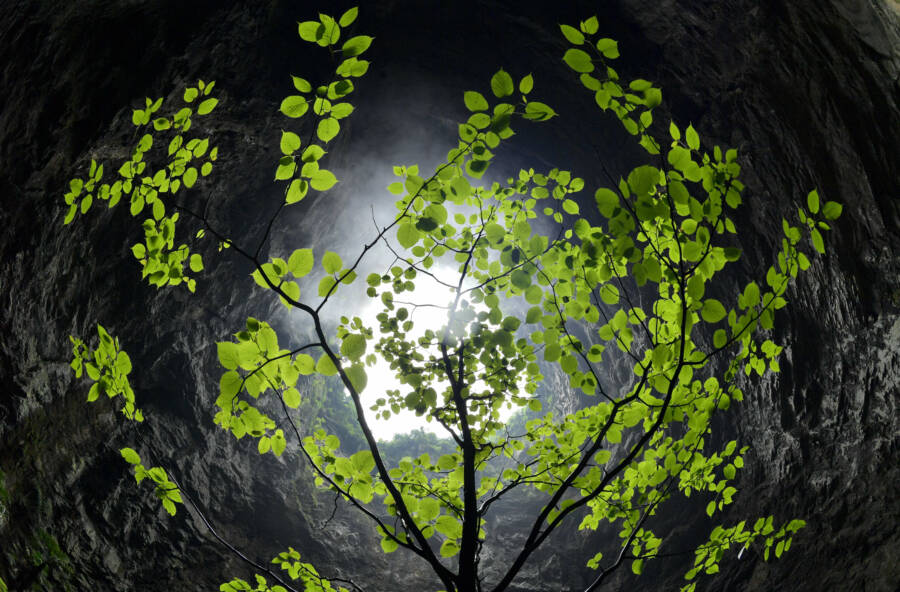Spelunkers Descended Into A Sinkhole In China — And Found An Entire Forest At The Bottom

Xinhua/Song Wen via Getty ImagesA photo taken from within a sinkhole in China.
In China’s Guangxi Zhuang Autonomous Region, there is a sinkhole that measures roughly 1,004 feet long, 492 feet wide, and 630 feet deep. And at the bottom of it, there happens to be a forest of “ancient trees” and “shade plants,” as a cave exploration team discovered earlier this year.
Chen Lixin, the team’s leader, reported that some of the trees were 130 feet high, and the plants grew to about shoulder height.
“I wouldn’t be surprised to know that there are species found in these caves that have never been reported or described by science until now,” Lixin said.
Giant sinkholes like this are commonly found in China. They are known as Tiankeng or “heavenly pits,” and this recent discovery, while fascinating, actually marked the 30th of its kind in the region. In fact, that same team of explorers found 19 other massive sinkholes back in 2019.
The prevalence of Tiankeng in southern China is largely due to the region’s karst topography, as its landscape is susceptible to the formation of sinkholes and caves.
“Because of local differences in geology, climate, and other factors, the way karst appears at the surface can be dramatically different,” said George Veni, executive director of the National Cave and Karst Research Institute. “So in China you have this incredibly visually spectacular karst with enormous sinkholes and giant cave entrances and so forth.”
It may be fairly common, but that made the discovery no less spectacular.
After reading up on 2022’s weird news, check out the strangest news stories from 2021 and 2020.





